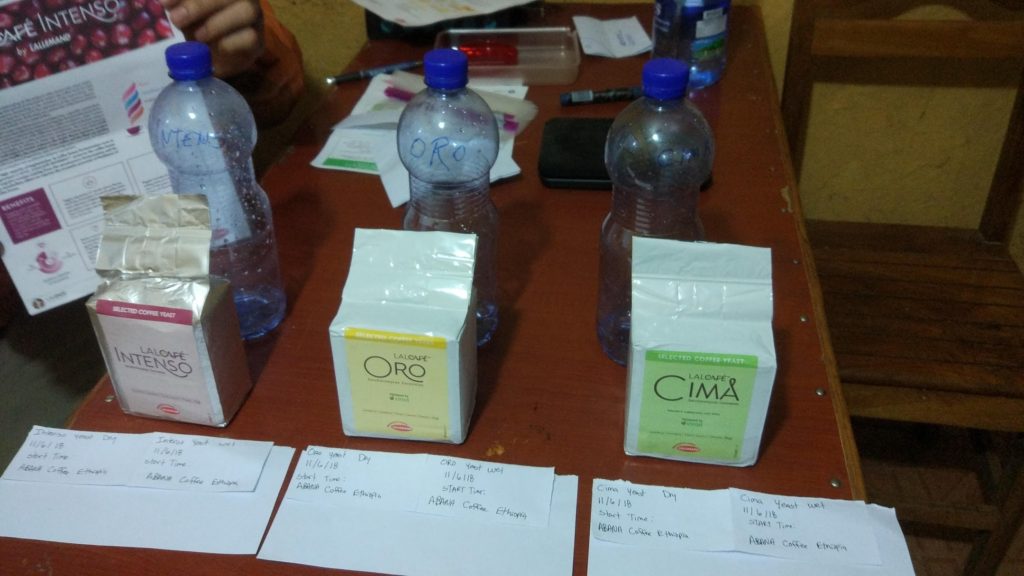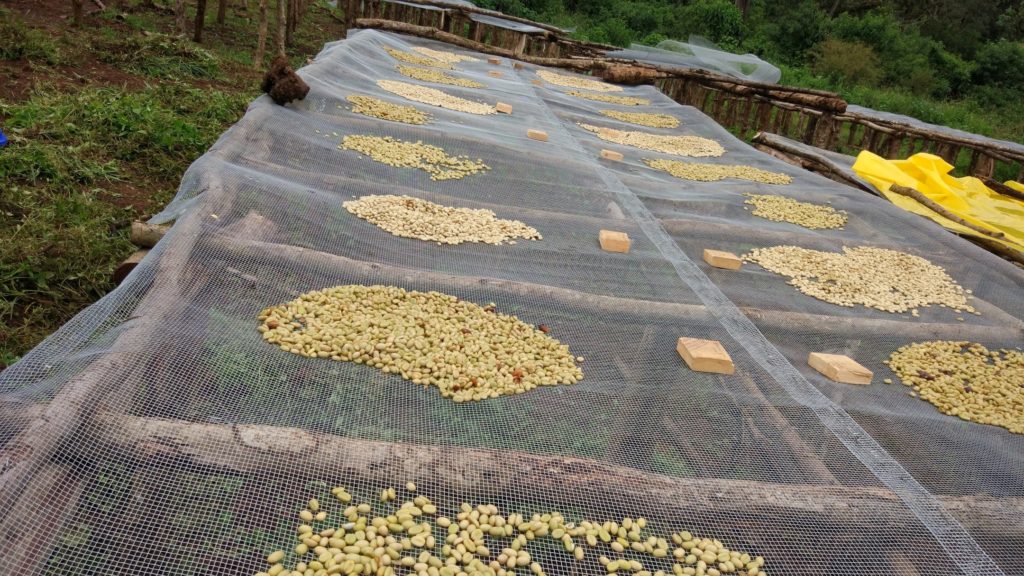“This time we will be reviewing a set of three commercial yeast strains developed by Lalcafe™ for coffee processing. To find out whether they improve processing efficiency and/or final quality by enhancing flavor profile. Lalcafe™ is the first company to develop yeast strains exclusively designed for coffee processing.”
Why do we need commercial yeast?
Yeast are simple and ancient single cell microorganisms that have evolved to colonize all habitats on earth. It is the most basic and ubiquitous type of fungus. For thousands of years, people have used yeast’s capacity to convert carbohydrates to carbon dioxide in baking and the alcohol resulting from fermentation in alcoholic beverages. Mead, wine, beer, or distilled spirits all use yeast at some stage of their production.
Although, yeasts are almost everywhere, only certain yeast strains can produce ethanol by fermentation of carbohydrates in anaerobic or low oxygen conditions, likewise they are largely responsible for different flavor profiles found in beer, wine and bread. Consequently, depurating the best strains of yeast for each application has always been a top human priority.
In coffee however, applying commercial yeast strains is a new concept. Fully washed coffee processing consists in pulping and storing coffee seeds with their mucilage and sugar content almost intact for several hours. During this time, local wild yeast from the environment would digest and ferment the mucilage until it is loose enough to be rinse away with running water prior the drying stage. This fermentation stage, not only helps by removing the attached mucilage from each seed but it is also responsible for the coffee identity, by adding an extra dimension and flavor profile unique to each origin, terroir or region.
Lalcafe™ yeast, when used, would substitute natural yeast and the company claims it would help coffee processing as follows.
- Higher expression of the natural aromatics and flavor of the varietal.
- Increase in cup quality.
- Water saving.
- A more complete and through removal of mucilage.
- Greater consistency.
- Protection from defects.
The main objective of these experiments was to try the three different yeast strains in control conditions to verify or deny the accuracy of these claims.
Experimental design
The full experience took place in December 2018 at Abana coffee farm at Gera, Ethiopia. (https://www.abanacoffee.com/)
For each experiment, 2Kg of wet parchment originated from exceptional, manually pulped, defect/floater free, fully ripe coffee cherry was placed into a 20-liter bucket.
6 buckets set were used for each of the three yeast strains and one additional set with no added yeast was left as control.
Following vendor’s instructions, Oro, Intenso and Cima yeast strains were rehydrated at 1g/kg ratio and suspended for 30 minutes in a volume of water 10 times its weight, before being transferred into the corresponding bucket and let rest undisturbed and covered as follows.

Yeast rehydration period 
Coffee samples during drying stage
After the fermentation period was over each sample was washed and rinsed thoroughly by hand, until all mucilage and yeast left over solution was removed.
SEE ALSO: Is organic coffee better than traditional coffee?
Each sample was then set to dry in a raised bed for several days until moisture content reached 12%. Subsequently, all samples were hulled and roasted using exactly the same roasting profile in a portable Ikawa coffee roasting machine.
All samples were then cupped side by side by Michael Omran (Abana’s general manager) and myself. Differences and cup profile from each sample were recorded and later discussed.
Results
Rehydration and suspension: During the yeast rehydration and suspension, Intenso yeast showed difficulty dissolving. However, after the experience was over, this issue showed to be irrelevant and it did not affect the results.
Biochemical demucilaging and fermentation: The three yeast were able to removed 100% of the mucilage in less than 9 hours, while the control sample nonetheless took 36 hours. Therefore, results from the control sample at 18 and 24 hours fermentation time were inconclusive and unavailable during the cupping sessions. All yeast samples were compared against the 36 hours total fermentation control sample only.
Cupping results: 36 hours fermentation time showed to be the best, for the three yeasts. It provided the most intense, clear and pleasant flavor profiles. Likewise, dry fermentation proved to be the most effective and fastest demucilaging method across the board while compared to wet fermentation sample results, delivering the most intense, clear and pleasant flavor profiles as well.
Cupping Profiles:
Intenso yeast: Black tea, medium body, caramel, honey and mild citric acidity. Aftertaste was dry and short with a remarkable lack of complexity. The top score for this yeast was 84. (SCAA cupping standards)
Oro yeast: This yeast was the worst performer, showing a weak body and only traces of caramel and lime with a harsher tactile. The top score for this yeast was 83.25. (SCAA cupping standards)
Cima yeast: This yeast was the best performer, delivering notes of orange, sugar cane, black tea and apple with a mild body and a smooth finish. The top score for this yeast was 86. (SCAA cupping standards)
Control sample: Surprisingly, the best results overall, showing floral notes, roses, rue, blueberry and strawberry, medium body, buttery body, extremely clean and sharp. The top score for this sample was 89. (SCAA cupping standards)
SEE ALSO: Is shade grown coffee better?
Conclusions
- These yeasts cannot improve an already great coffee. However, the effectiveness and feasibility of using these yeasts successfully during coffee processing are inconclusive. I would like to try these yeasts again in a future experiment, but next time, using low elevation coffee or beans that hardly respond to processing enhancements. If the use of commercial yeasts can increase, the score of unexceptional coffees in one point or two, the potential benefits and applications could positively apply to an even wider number of coffee processors around the world.
- The use of Lalcafe™ yeast definitely reduce coffee fermentation times, in our experience up to three times faster than the control sample.
- The use of these yeasts would totally replace coffee’s own identity, taste profile and terroir. In few cases, it could be a positive aspect. Nevertheless, in our particular case it was detrimental to the quality standards Abana coffee farm delivers.
- The three yeasts performed extremely well without added water during fermentation. They would definitely be an asset in water saving initiatives during coffee fermentation.

